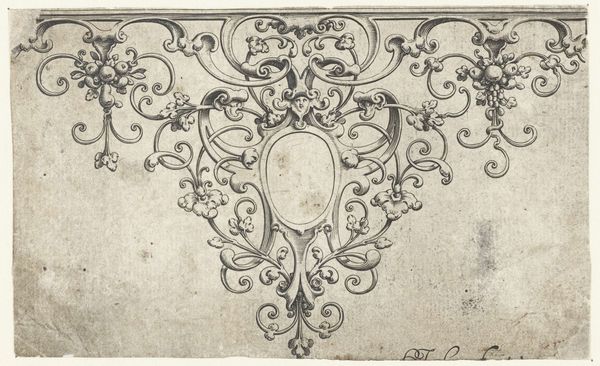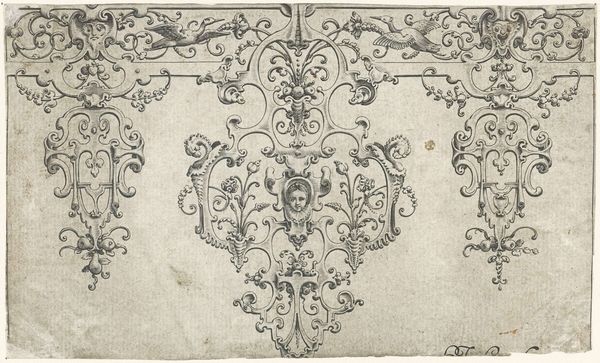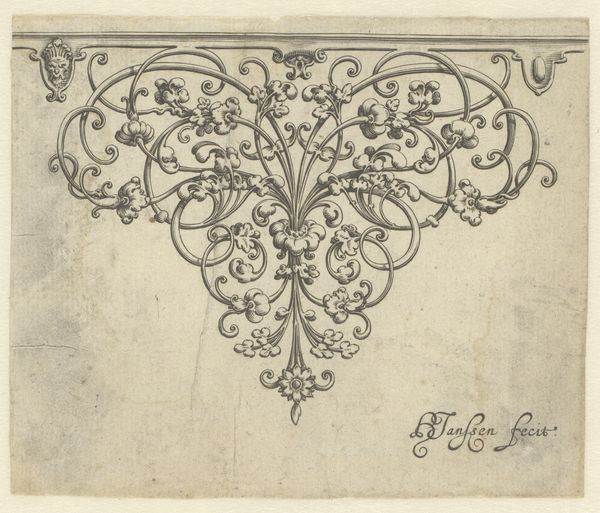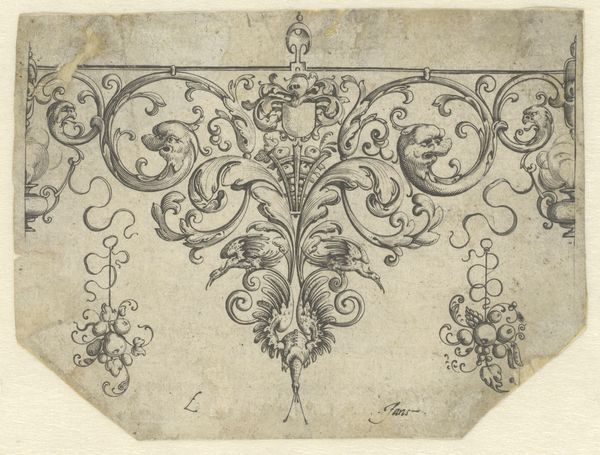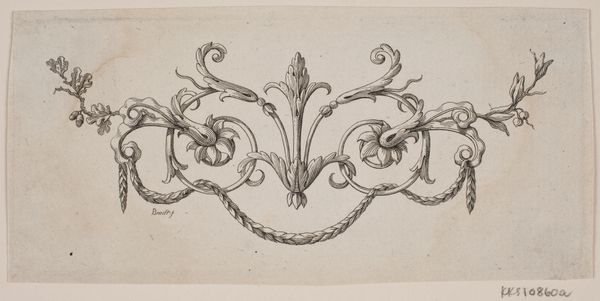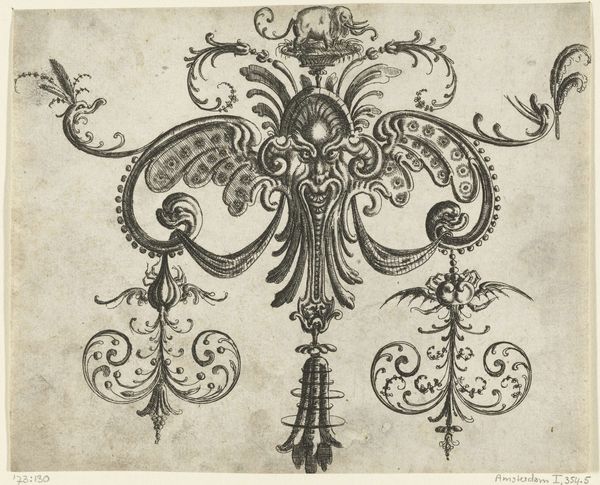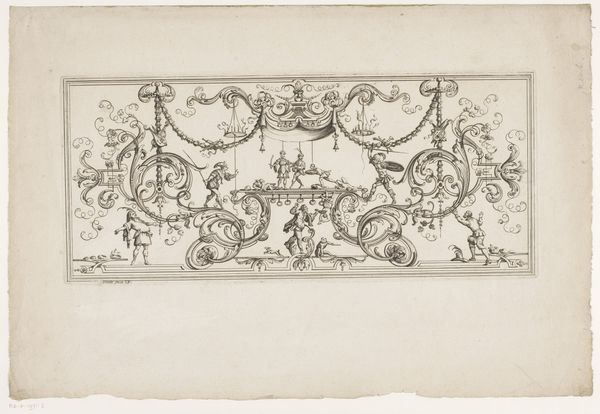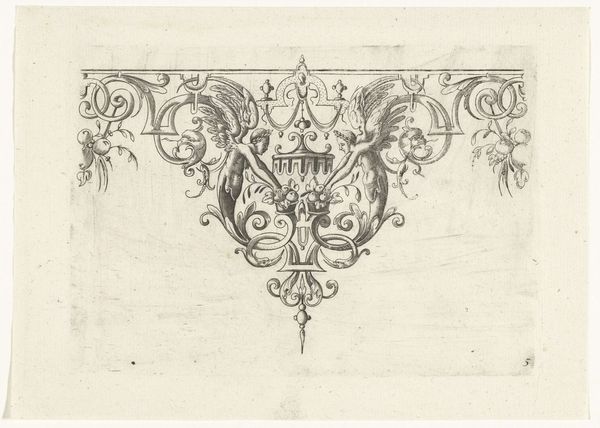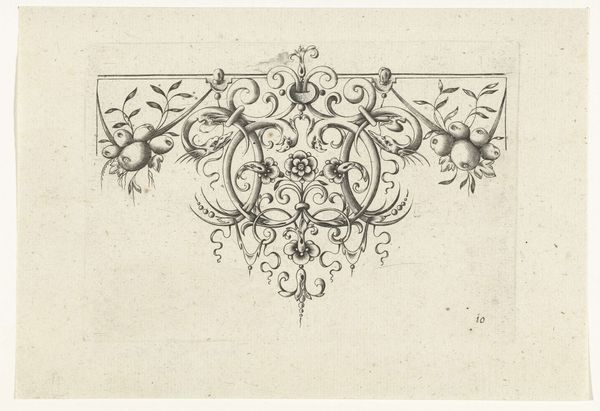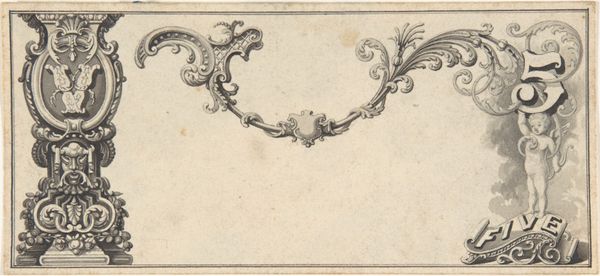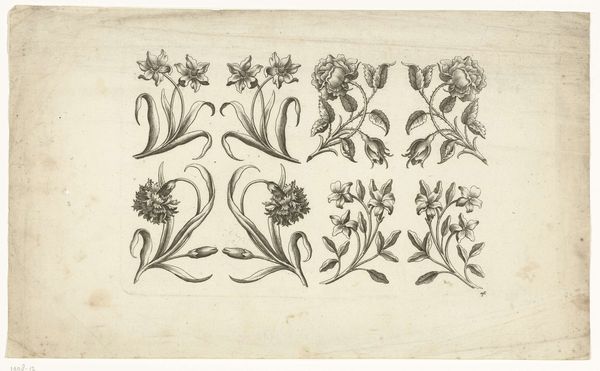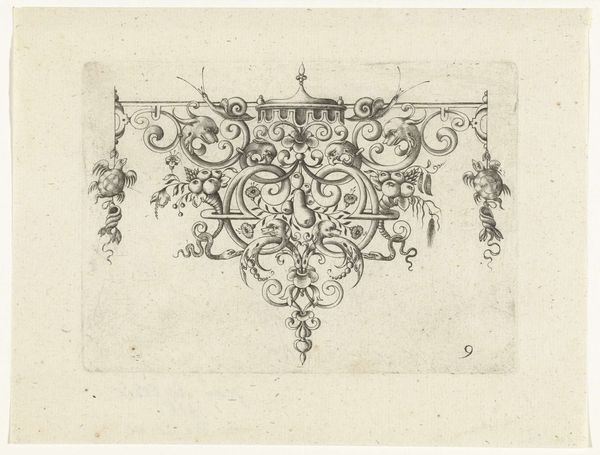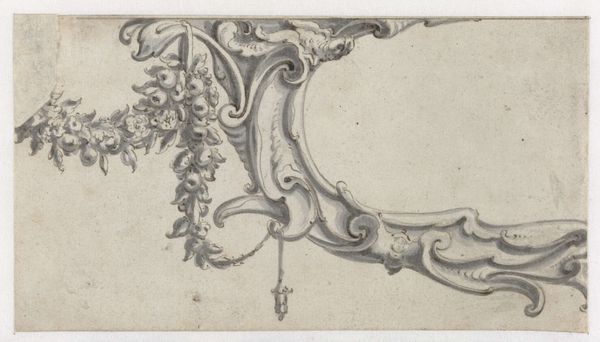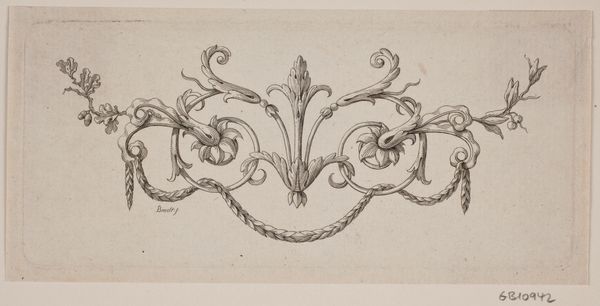
drawing, ink, engraving
#
drawing
#
baroque
#
pen drawing
#
ink
#
geometric
#
line
#
decorative-art
#
engraving
Dimensions: height 86 mm, width 143 mm
Copyright: Rijks Museum: Open Domain
Curator: Immediately striking. It almost feels like a freeze-frame from a theatrical performance. What do you make of it? Editor: This is a 1631 drawing by an anonymous artist, currently held at the Rijksmuseum. It is titled “Spits met ranken in de vorm van een lamberkijn”, translating to “Point with tendrils in the form of a lambrequin,” rendered with pen and ink. Curator: "Tendrils" perfectly describes that looping dynamism. I find the composition absolutely captivating; a balanced dance of symmetry and controlled asymmetry within its baroque framework. The use of line is especially sophisticated, wouldn't you agree? Editor: Indeed, observe the details in how this line drawing imitates engraving, the way hatching builds form. Beyond the technical virtuosity in the draftsmanship, what interests me most is what a drawing like this signifies about labor and the role of design. An engraving, and the drawing made to reproduce it, speaks to a complex web of workshops. Curator: Ah, you bring a grounded perspective. I was swept away by the artistry itself, focusing on the elegance of those decorative flourishes. The cherubic figures interspersed within the swirling foliage – they evoke such a lighthearted, almost playful spirit. I appreciate that. Editor: And it's exactly these playful elements that were commercial, intended to catch a patron's eye. How was the labor divided to produce and disseminate ornament designs like this? Consider how these ornamental designs likely served pattern books or functioned directly within workshops devoted to craft and building trades. Curator: Interesting. You're drawing attention to the production lineage. Yet, within its function, I see that there’s still pure design ingenuity. See how that symmetry and dynamism create visual harmony... Editor: Certainly! Considering its purpose in circulating patterns, seeing it on display asks us to pause over that transition between practical utility and purely aesthetic experience, one forged through specialized artistic work. Curator: Absolutely, thinking about that transition expands how we can engage with the work. Thank you for providing that insight! Editor: My pleasure, appreciating design means remembering the hands and social worlds behind it!
Comments
No comments
Be the first to comment and join the conversation on the ultimate creative platform.
